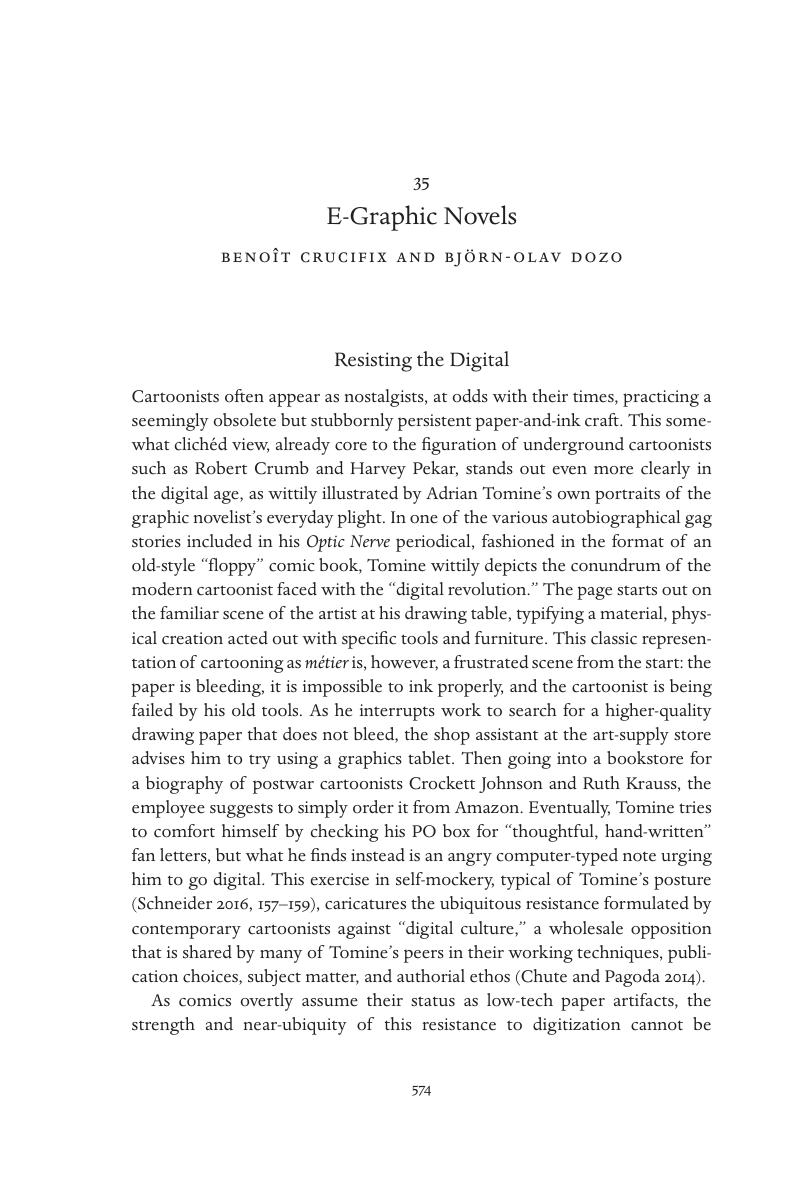Book contents
- The Cambridge History of the Graphic Novel
- The Cambridge History of the Graphic Novel
- Copyright page
- Contents
- Illustrations
- Contributors
- 1 Introduction
- Part I 1799–1978
- Part II 1978–2000
- Part III 2000 to the present day
- 24 Joe Sacco, Graphic Novelist as Political Journalist
- 25 The Discovery of Marjane Satrapi and the Translation of Works from and about the Middle East
- 26 Chris Oliveros, Drawn and Quarterly, and the Expanded Definition of the Graphic Novel
- 27 The Jewish Graphic Novel
- 28 Crime Genre Fiction in the Graphic Novel
- 29 Genre Fiction in the Graphic Novel: The Case of Science Fiction
- 30 The Superhero Graphic Novel
- 31 Reinvention of the Form: Chris Ware and Experimentalism after Raw
- 32 Convergence Cultures: Modern and Contemporary Poetry and the Graphic Novel
- 33 Cinema’s Discovery of the Graphic Novel: Mainstream and Independent Adaptation
- 34 The Novel and the Graphic Novel
- 35 E-Graphic Novels
- 36 World Literature
- Bibliography
- Index
- References
35 - E-Graphic Novels
from Part III - 2000 to the present day
Published online by Cambridge University Press: 30 July 2018
- The Cambridge History of the Graphic Novel
- The Cambridge History of the Graphic Novel
- Copyright page
- Contents
- Illustrations
- Contributors
- 1 Introduction
- Part I 1799–1978
- Part II 1978–2000
- Part III 2000 to the present day
- 24 Joe Sacco, Graphic Novelist as Political Journalist
- 25 The Discovery of Marjane Satrapi and the Translation of Works from and about the Middle East
- 26 Chris Oliveros, Drawn and Quarterly, and the Expanded Definition of the Graphic Novel
- 27 The Jewish Graphic Novel
- 28 Crime Genre Fiction in the Graphic Novel
- 29 Genre Fiction in the Graphic Novel: The Case of Science Fiction
- 30 The Superhero Graphic Novel
- 31 Reinvention of the Form: Chris Ware and Experimentalism after Raw
- 32 Convergence Cultures: Modern and Contemporary Poetry and the Graphic Novel
- 33 Cinema’s Discovery of the Graphic Novel: Mainstream and Independent Adaptation
- 34 The Novel and the Graphic Novel
- 35 E-Graphic Novels
- 36 World Literature
- Bibliography
- Index
- References
Summary

- Type
- Chapter
- Information
- The Cambridge History of the Graphic Novel , pp. 574 - 590Publisher: Cambridge University PressPrint publication year: 2018
References
Primary Sources
Secondary Sources
- 3
- Cited by



